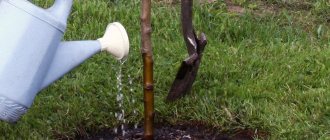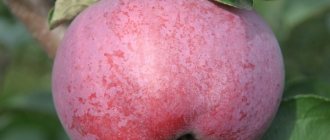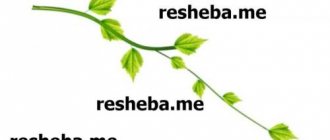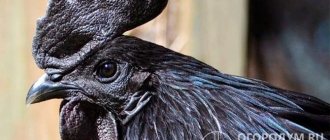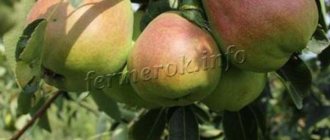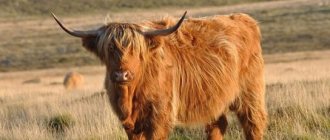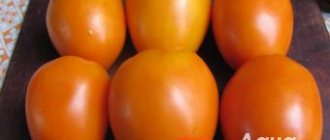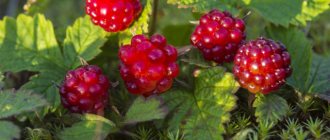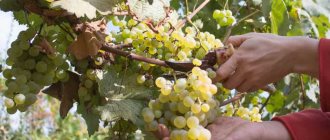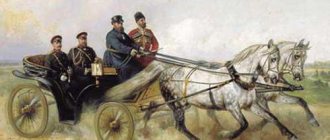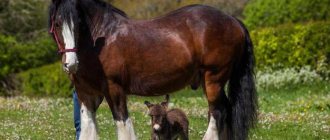Maintenance and care
Animals are unpretentious and do not require special living conditions.
Sports horses are kept in individual stalls with an area of 12–16 square meters. m. Wood shavings, sawdust or special rubberized mats that are easy to wash are used as bedding. The stall is equipped with a manger for hay, a feeder for grain and muesli, and an automatic drinking bowl.
In winter, the stables are not heated. A room containing several dozen animals does not freeze. In severe frosts, horses wear insulated blankets. Spacious paddocks are equipped for walks near the stables. It is beneficial for animals to spend a lot of time in the fresh air, it strengthens the body.
In the summer, horses are bathed or hosed with cool water.
The basis of a sports horse's diet is hay and muesli - specially processed cereals (oats, barley, corn) with additives (flaxseed, vitamins). Vegetables are not given to sports horses; they have a laxative effect. Horses not competing are pampered with carrots, apples, and pumpkins.
In summer, it is useful to graze horses, choosing meadows with bromegrass, wheatgrass, and vetch.
https://youtube.com/watch?v=5aeOgpVsgGI
The Russian trotter is the pearl of Russian trotting horse breeding
But in pursuit of results on the races, it is important to preserve the unique appearance and character of the animal, without thoughtlessly resorting to crossing with other breeds
Advantages and disadvantages
It is not for nothing that Russian trotting horses make up the majority of the sporting horse stock kept in our country. The animals are perfectly adapted to domestic weather conditions, elegant and kind. Among the undeniable advantages of the Russian horse are:
- versatility of use (professional and amateur sports, hippotherapy, horse-drawn carriage rides);
- elegant appearance, harmonious physique;
- unpretentiousness in content;
- high agility (1600 m - 1 min. 58.6 sec.).
Russian trotters are successfully used to improve (lighten the type and increase agility) draft horses.
Experts include the following disadvantages of the breed:
- late maturation (4–6 years);
- weak muscles of the lower leg and forearm;
- The stance of the front legs is turned inward, causing the horse to “rake” with its legs when walking.
These disadvantages of animals are important only for professional competitions; for amateur sports and walks they are not so important.
Characteristics of Russian Trotter horses
Most often in pens you can find a Russian Trotter of a black, red color; in rare cases you are lucky enough to meet a gray color. These horses are characterized by a wide forehead, a long back, a straight neck, a sinewy, developed, symmetrical body, black eyes, and long ears. The Russian Trotter breed has a perfectly formed skull, toned body muscles, and a protruding chest.
The limbs of representatives of this species have a slight defect: the front hooves look slightly at each other, and the hind hooves, on the contrary, look to the sides. All this perfectly brightens up their fit, strong appearance. Due to the irregular structure of the limbs, the Russian Trotter, compared to other horses, has a significant priority: it can overcome high obstacles at high speed. The hooves of Russian Trotters are quite hard and have a rounded shape. Due to this, they are able to withstand strong blows.
Depending on the crossing, the most incredible, beautiful types of Russian Trotters were born. All this was done for testing and better results at the races.
As mentioned above, Russian Trotters are fully physically formed by the age of 3-4 years, and acquire agility by the age of 6 years. Like all horse breeds, the Russian Trotter has its own standards of growth and development:
- The height of the withers is not less than 145 cm and not more than 170 cm.
- Body length should be 165 cm.
- Chest circumference - 185 cm.
- The circumference of the horse's mouth is 22 cm.
Russian Trotters are also divided into several types. The guild type of horse is famous for its sinewy front hooves, large body weight, and endurance over long distances. Representatives of this breed were Hylas and Lucifer. Another species is known as the “Overseas Miracle”. He was introduced by grooms Ginger and Breadwinner. The characteristic of this species is its large body mass and wiryness. Such horses were considered the fastest.
The next type of breed has the personal name “Antony”. This species was presented by riders Chekanny and Razgulay. It is characterized as very hardy, with strong hooves. The horse has a lot of weight, but at the same time it is sinewy and is capable of gaining very high speed. Ideal for riders.
The last type of horse of this breed is “Awe”. The characteristics of this species include the small size of the animal and strong hooves. Representatives of this species were Cockerel and Evening.
At the moment, the Russian Trotter breed is quite common. If you wish, you can visit, for example, the Dubrovsky stables in the Poltava region, the Lavrovsky stable in the Tambov region and other places. It was there that sports horses were trained for agricultural work.
Russian trotter
By crossing the American and Oryol trotters, we got the Russian trotter. The Russian trotter is considered the youngest horse breed. The official date of establishment of the horse breed is 1949. It is still used for competitions.
Russian trotter
Characteristic
The exterior of the Russian trotter can be different, but the basis is a long back, dry legs and neck. Bays predominate, there may be red ones, there are black and black colors, and rarely gray and brown ones.
Story
Before the revolution, American trotters were the leading breed. Although the Orlovskys were beautiful, they were inferior to them in speed. As a result, horse breeders from Russia began to buy Americans and pair them with Oryol people. The date when the first American trotters came to Russia, more precisely 1900, is considered the beginning of the breed.
Previously it was believed that Oryol horses were the fastest. But the Americans overtook them. Since a lot of money was bet on horses at the hippodromes, and the prizes were quite large, people who owned Orlovts began to buy American horses, and then they crossed them with Orlovts. But American horse breeders did not sell very high-quality horses. Since not all horse owners understood what breeding value was, they were given bad horses and charged huge sums. However, the mestizos were still faster. Oryol lovers and supporters of mestizos were divided into 2 camps. When the favorite of the first, Krepysh, competed with the American General or with a mestizo, many eyes watched them.
In the Soviet Union, all trotters that survived were used for horse breeding. But American horses were prohibited from entering the young republic. Therefore, they mixed mestizos, developing growth and agility. The calculation was not only for the hippodrome, but also for a horse that could be used in the cavalry. A new breed was bred in several cities. Then these factories bred horses with the desired properties, after which in 1949 the breed received official recognition and the name - Russian Trotter. Until 1949, only Orlov residents were called Russian trotters. Although the Russian trotter was not as beautiful as the Oryol trotter, it was faster. In 1961, horsemen from the USSR again began to buy American horses. At first, the qualities of horses gave good results as a result of systematic work, but then crossbreeding ceased to be so. In the 20th century, the Russian trotter became a crossbreed. The most famous stallion of the pre-revolutionary period was Pylyuga, and in the 20s a black stallion named Cockerel. Reprise is now very famous, having won more than one competition, showing excellent speed - 1.59 minutes.
Currently, Russian trotters are bred at Elansky, Moscow, Omsk and other stud farms.
Why was a new species created?
Russian Trotter, a breed of horse developed through numerous crossings of the best specimens. The reason for this need was business, betting, and the excitement of betting as the main engines of horse breeding. Trotters began to appear in the world, conquering the famous Oryol residents in all respects.
Factories were faced with the task of restoring the competitiveness of local production. To do this, it was necessary to find the best producers by purchasing Standardbred from the Americans. Of course, only rejected specimens came into the country; no one would share truly pure, venerable and healthy specimens, and the sellers wanted to make money, so they spent money on forgery.
Political cataclysms, wars, and revolutionary actions were obstacles to the successful development of Russian horse breeding and each breed separately.
Hoof cleaning
The hooves are the part of the horse that bears the most stress. Therefore, their care should be appropriate. After all, a broken hoof, a crack in it, or a splinter can damage a horse’s leg and cripple it.
Every time after riding a horse, you need to clean the hooves with a special hook. In addition, it is necessary to check the hooves for wounds and cracks. If you want to properly care for your horse, then contact an experienced veterinarian, because textbooks do not always provide complete and clear information on care.
Today the Tersky plant allows you to come to the base and communicate with horses. Therefore, the Terek breed is very popular among orphanages and rehabilitation centers. These horses are calm and very obedient.
Currently, breeders advise improving and improving the conditions for keeping horses at the factory to increase the speed and endurance of horses of this breed. And besides, you need to constantly update your training and dressage, based on the latest competitions in the world.
Diseases
A trotter, like any other creature, can get sick. To make a correct diagnosis, you need to seek help from a veterinarian. Only after a series of examinations will he prescribe treatment.
There are some symptoms that every breeder should be aware of in order to provide first aid to the horse in time.
Diseases are divided into contagious and non-contagious. The most common are:
- tetanus;
- rabies;
- flu;
- anemia;
- gastrophylosis;
- toxoplasmosis;
- arthritis;
- mastitis;
- cataract;
- abscess.
This is a small part of the ailments that a trotter can be exposed to, so it is worth closely monitoring the health of horses. The reasons for the manifestation of symptoms are different: horses are often poisoned by poisonous plants, fall, are injured, etc. If your pet refuses to eat or his temperature rises, you should seek help from a specialist.
With parasitic diseases, approximately the same symptoms appear. The only exception is temperature: in this case it may not increase. Moreover, if a horse becomes ill with an infectious disease, you need to urgently contact a veterinary service: such diseases can be transmitted to people and are often not treated. Sick livestock are often killed and burned.
Diet
Since these animals are very active, they need to be provided with good living conditions and the right diet. The basis of feeding for foals and adults is hay, grass, and oats.
For adequate development, the trotter needs to be provided (for a year):
- oats – 2 t;
- bran – 0.5 t;
- root vegetables – 1 t.
Salt must be added to the diet in the amount of 13 kg. Vegetables and fruits that are in season are a great way to give your horse the vitamins and minerals he needs. The spring-summer period is spent on paddocks, where the horse grazes a lot and provides itself with food on its own. However, it is necessary to choose the fields correctly; they should not contain clover, legumes, or alfalfa. The horse should be given plenty of water; he drinks up to 80 liters per day.
Be sure to compare the amount of exercise with the amount of food and drink - increasing the load, increase the volume of food and drink.
Appearance of the horse
The trotting horse is one of the largest among its relatives. The height of its withers can reach 170 cm. The length of the body is within 160 cm. The size of the belt is approximately 20.3 cm. The volume of the chest is about 180 cm.
Due to the fact that the trotter is a large horse, its weight is about 550 kg. The breed has a harmonious build. Its head is small in size and its neck is gracefully curved. The mane is thick, the tail is long and fluffy. Massive muscles and strong legs.
Trotter's appearance
Horse breeders often breed Trotters in order to participate in various competitions. The main color type of these horses is gray, but the animal can also have a black color.
Harmonious proportional build and strong structure of the torso and legs? the main difference between this breed. The most common colors are bay and black, and an order of magnitude less common? gray and red. Trotters are distinguished by slightly elongated, mobile ears and dark eyes.
Important! Russian trotters can take part in races as early as 4 years old, because
by this time they are fully formed, but their agility develops a little later? by 6 years or more.
The most common colors among representatives of the breed are bay and black.
Horses of this breed have pronounced, toned muscles and strong tendons. Horses are famous for their strong, dry body, with a well-developed convex chest. Main characteristics of the breed:
- the famous clean profile and narrow head;
- strong neck, smooth and dry;
- prominent withers;
- powerful chest, girth 184 cm;
- toned stomach;
- long back and wide sloping croup;
- muscular legs with strong, dry tendons;
- height at withers? 165 centimeters.
This characteristic allows trotters to jump at high speed. In show jumping of the highest difficulty, horses easily overcome obstacles in the race without losing speed.
The hooves are firm and rounded and can withstand severe impacts with ease.
Modern representatives of the breed have representatives of 6 genealogical lines in their ancestors. These are the descendants of Gildeyets, Dodyr, Overseas Miracle, Trepet, Ailoshi-Podarok and Burbot. As a result of uncontrolled selection, more and more producers of this breed have American trotters in their ancestors.
Varieties
There are 4 types of trotters:
- Overseas Wonderfuls are a type of the fastest and highest-speed horses. These powerful and at the same time slender animals are beautiful and graceful.
- Antony is a subspecies of trotter with a massive body, strong muscular legs, well suited for riding.
- Awe are small horses with strong legs, capable of reaching great speeds.
- Guild breed, whose representatives are distinguished by their heaviness, increased activity and agility. Their endurance allows them to cover long distances.
When carrying out selective selection, all necessary measures are taken to improve indicators such as agility and speed of trotters. Preference is given to tall horses with strong and durable tendons and ligaments, a powerful, lean physique.
Features of care
The main task of the owner is to monitor the cleanliness of the stable and the horse itself. After each walk, you should cleanse his skin of dirt. If walks are made in rainy weather, it is necessary to blot the body of the horse or horse with a dry towel or wool washcloth.
Careful care allows you to notice injuries in time and prevent morbidity among the livestock. The skin of a thoroughbred trotter is cleaned 3 times a day with a soft sponge. The mane and tail are combed with a plastic comb using special sprays to improve the hair structure. In the morning after sleep, wipe your nose and eyes with a soft sponge moistened with water.
Horseshoes must be attached to the hooves. To do this, it is better to find a qualified blacksmith. Reforging is carried out once every 6 weeks.
Hoof cleaning:
run your hand down the animal’s leg, squeeze its back part next to the tendon and bend it at the joint; Supporting the hoof, remove all dirt and stones using a special hook; assess the condition of the hoof and carefully place the animal’s foot on the floor; If there are cracks in the hoof, contact your veterinarian.
In the warm season, horses are kept outside and spend the night under a canopy; in the cold season, they live in a stable. The compartments in the premises are made of such a size that the animal can freely turn around and lie down. The optimal size for a Russian trotter is 3.6 x 3.6 m. During construction, they immediately make a provision for the drain, otherwise you will have to spend more effort on cleaning the premises. The floor is made of concrete, and rubber mats and straw bedding are laid on top, which reduces pressure on the hooves.
To clean the premises, the animals are taken outside. All space in the stall is cleared of feeders and drinkers. Using a fork and shovel, remove the litter, then sweep the floor and wash it using non-aggressive detergents. Feeders and drinkers are also washed and filled with fresh water and food. New bedding is laid on the floor.
Even in the summer, when free-range, dry food and mineral supplements are added to the horses’ diet. On average, one horse requires 15 kg of hay, in addition to lush greens. Freshly cut grass is given only if its moisture content does not exceed 20%. Cereals include oats and corn in the diet.
They are given with caution so as not to provoke obesity. Be sure to have a block of salt that the animal will lick
It is selected depending on the needs of the horse. Factory blocks differ in color depending on the content of additives:
- white – regular table salt;
- red – contain iodine (select with the lowest concentration);
- blue – contain cobalt and iodine;
- brown - include mineral supplements.
Water is given 2 times a day. For a trotter weighing 450 kg, 20–27 liters will be required. As dry food consumption increases, more water will be required. The best option is to install automated drinking bowls on the street and in the barn.
Diet and water
A horse's diet will vary depending on the season (at different times of the year the animal will need different vitamins and minerals), age, gender, physical activity and other factors.
Proper functioning of the horse's gastrointestinal tract will be possible by feeding it with hay, vegetables, and grains. It is better to coordinate the menu and quantity of each ingredient with your veterinarian - they will depend primarily on the weight, age and gender of the horse.
The following standards are usually recommended:
- hay (preferably leguminous) - 1.5–2 kg per day per 100 kg of live weight;
- grain legumes (oats, barley, corn, rye, wheat, millet, sorghum, mogar, chumizu, peas, vetch, lentils, beans) - 3–4 kg per individual per day;
- bran - up to 2.5 kg per 1 individual per day;
- vegetables (carrots, apples, fodder beets, potatoes, turnips, rutabaga) - 2–4 kg per 100 kg of live weight per day.
You can also add ready-made feed and premixes to the feed.
An approximate daily menu for an adult horse might look like this:
- oats - 8 kg;
- corn, barley - 6 kg;
- rye, wheat - 4 kg;
- sorghum, millet - 4 kg;
- vetch, lentils - 2 kg;
- flax and sunflower cakes - 3.5 kg;
- hemp cake - 2.5 kg;
- cotton cake - 1.5 kg;
- wheat bran - 4 kg;
- malt sprouts - 1 kg;.
- Dry spent grains - 3 kg;
- dry stillage - 2 kg;
- dry pulp - 3 kg;
- feed molasses - 1.5 kg;
- potatoes - 8 kg;
- fodder beet - 12 kg;
- carrots - 10 kg;
- fresh stillage - 12 l;
- silage - 8 kg.
When introducing premixes, there may be this option:
- hay - 7 kg;
- corn - 1–2 kg;
- herbal flour - 1 kg;
- molasses - 500 g;
- premix - 100 g;
- salt - 50–60 g.
The animal should be given water twice a day - in the mornings and evenings. If your horse is hot after exercise, wait at least an hour before giving him water. The water should be warm; in winter it should be heated to +14. +16 degrees. One individual requires up to 50 liters of liquid per day.
Thus, the Russian trotter is a light draft horse breed, distinguished by its beautiful appearance, excellent racing characteristics and ease of care.
The horse's peaceful nature, strong legs and fast running make it attractive to race organizers, organizers of riding courses, and rehabilitation programs.
Mandatory animal care activities include cleaning fur and hooves, vaccination, feeding and watering, and maintaining sanitary and hygienic standards in the stable.
Russian horses have always been an integral part of Russian culture and history, they were revered and appreciated throughout the world. That is why the once fastest breed in Europe, the Oryol Trotter, was crossed with the American Standardbred horse breed. After reproductive crossing of representatives of these breeds, they obtained a completely new combination of speed and agility—the Russian Trotter breed.
Contents of step-by-step instructions:
History of the breed
The history of the creation of the Russian trotter breed began at the beginning of the twentieth century. It was then that American horses were brought to the territory of the Soviet Union. The Americans were avid competitors for the Oryol trotters, because it was the Oryol trotters who were considered the fastest on the Russian hippodrome, but later the American individuals became the leaders in speed.
Farmers who bred Oryol horses began to buy American horses to further crossbreed the two species. But the problem was that all the acquired stallions were not as good quality as we would like. Greedy American entrepreneurs sold horses to Russians for big money, but did not pay attention to quality. Female Oryol horses were provided as a pair for such stallions. In this way, significant damage was caused to the Oryol herds, although if you look at the resulting mestizos, it will become noticeable that they were much better than the Oryol herds, even if they were significantly inferior to the American breed.
After the Civil War was over, horses from America were nevertheless imported into Russia, and they were of excellent quality. The previously formed mestizos were also preserved. In the 20s, a decision was made to open a farm where Oryol horses would be crossed with American trotters. After several unsuccessful attempts, it was decided not to use foreign trotters.
To achieve good results, they decided to cross mestizos with each other.
During selection, special attention was paid to the external parameters of the horse. The emphasis was on the agility parameter
The Russian trotting breed of horses was bred for the purpose of testing at the races. The Russian Trotter horse was supposed to be universal. It was necessary to make it so that it could be used in agriculture, in the army and even in sports competitions.
https://youtube.com/watch?v=VIDEO_ID
Over the next two decades, farmers put a huge amount of effort into selecting the right individuals.
It was important that they completely correspond to each other. This parameter was considered very important, so training was carried out for each
In 1942, this breed was bred and recognized, but they were not yet called Russian trotters. At first, it was planned to further crossbreed only individuals of this breed.
Starting in the 60s, it was decided to resume the supply of American stallions. In some cases, mares were imported. All individuals were of ideal quality, therefore, the agility of the Russian breed increased significantly, and the external characteristics were not affected. Subsequently, supplies were so strong that horses began to be crossed randomly. The result was that the Russian Trotter breed lost its relevance, because American characteristics predominated in it. The Russian trotter became an ordinary cross between Oryol and American horses.
Almost a sad ending
Early 60's
In the early 60s, Soviet riders began to participate in international competitions. Where a very unpleasant discovery awaited them. It was still not easy for the Russian trotter breed to compete with American and even French trotters. Apparently, having decided that its internal reserves had been exhausted, Soviet horse breeders decided to break the taboo on the import of American trotters into the USSR. And again inject fresh blood into the breed. In 1961, high-class stallions Bill Hanover and Lowe Hanover were purchased in the USA. Then - Centennial Way and several more stallions and mares of the same quality. Thanks to them, at first the agility of the Russian trotter really improved. Moreover, surprisingly, the horse breeders managed to preserve his exterior.
However, then they made the same mistake as their pre-revolutionary colleagues, in an effort to “catch up and overtake America.” Starting to buy a large number of American trotters and randomly cross them with Russians. And this mistake became fatal. Already in 1969, there were only a little more than 25 thousand Russian purebred trotters and 922 thousand mixed breeds in the USSR.
At first, this did not cause any concerns, especially since there was not the slightest reason for them. Almost all of Bill Hanover's offspring, as a result of various competitions, became part of the elite of “timeless trotters.” His sons Caring and Ideal have repeatedly won the international Peace Prize. And daughter Gladkaya set a Swedish record for mares of foreign origin, running 1600 meters in 2 minutes. 0.9 sec. However, against the backdrop of these high-profile victories, none of the breeders noticed that the horses purchased overseas were of increasingly worse quality. When they realized it, it was already too late. The crossing of trotters became absorbent and led to the almost complete displacement of Russian blood from the breed.
By the 90s
By the 90s of the twentieth century, the Russian trotter as an independent species actually ceased to exist, becoming a Russian-American crossbreed - the one with which, in fact, the history of the breed once began, only in a slightly different combination.
Nowadays in Russia, 37 stud farms and some private owners are engaged in breeding the Russian trotter (or what is meant by these words). However, according to international class master rider V. Tanishin, purebred stallions of this breed cannot be found almost anywhere. This means that the crossbred horse is still distributed under this name.
Origin, characteristics and meaning of the name Anisiya (Anisya)
general characteristics
Trotters are characterized by such qualities as agility and stability of gait. They cover a distance of 1 mile, on average, in 1 minute 57 seconds. The first Hackney trotting breed was developed in England, but over time it degenerated. Today there are 3 main breed lines related to trotters:
In addition to the listed trotting breeds, there are also crossbred varieties, for example, as a result of crossing an American standardbred and an Oryol horse, a Russian trotter was obtained. Some Scandinavian breed lines, originally created as draft dogs, later began to be used as trotters. They show good results in running, covering 1 mile in 2 minutes 6 seconds.
Oryol trotter
The ancestor of the Oryol breed was the horse Bars 1, a descendant of the Arabian stallion Smetanka, bought by Count Orlov in 1875 from a Turkish Sultan. This horse had excellent physique and endurance, but his trot needed improvement. At that time, horse breeding in Rus' was in a deplorable state. The Count wanted to create a completely new breed line, with the ability to quickly cover long distances with a stable gait.
A year later, Smetanka died, but managed to leave behind several descendants. One of them, Polkan, was crossed with a mare from Denmark, which showed good trotting qualities. A foal was born that completely satisfied Count Orlov’s requests. He was named Bars 1. It is from him that the Oryol breed of horses originates.
Subsequently, numerous crossings of Polkan's descendant were carried out with mares of Dutch, Arab and Danish origin. Scientists worked to improve the agility and endurance qualities of horses. After the death of the count, the management of the selection work passed into the hands of a talented man, Vasily Shishkin.
Oryol breed horse
The demand for the Oryol horse has increased both among the local population and in foreign countries. However, the Civil War and World War II jeopardized further breeding work. A large group of enthusiastic scientists worked to preserve the population. Although the number of breeding stock has decreased significantly, the Oryol trotter has survived the crisis.
Today the breed is bred at numerous stud farms - Moscow, Perm, Altai, Novotomnikovsky, Khrenovsky. The main task of breeders is to improve speed and endurance, but not at the expense of height and conformation qualities.
Characteristics of the Oryol trotter:
- dry body type;
- long muscular neck with a beautiful swan curve;
- wide back and withers;
- neat rounded croup;
- sinewy long legs;
- height – 1.65–1.7 m;
- body length along an oblique line – 1.61 m;
- chest circumference – 1.8 m;
- weight – 550 kg.
Attention! Oryol trotting horses pass on their qualities well to their descendants, so they are used as improvers of other breed lines
